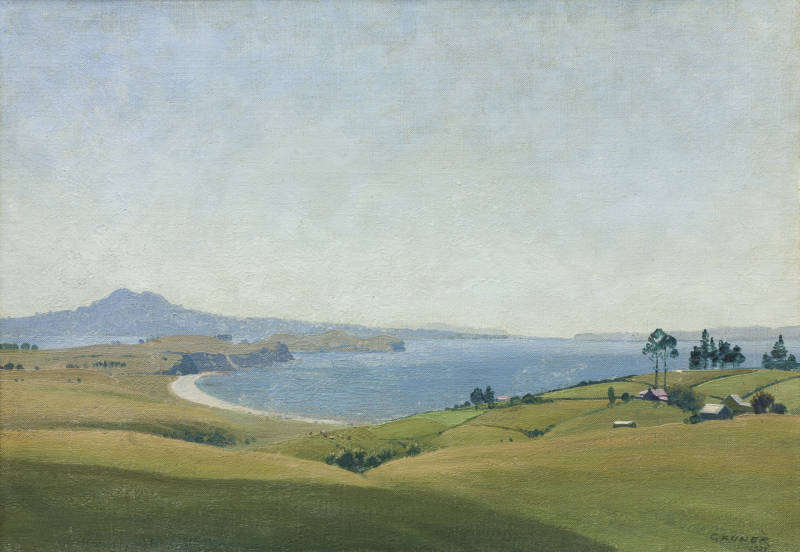GRUNER, Elioth;
Hauraki Gulf from West Tāmaki
1931
Oil on canvas
342 x 487mm

Born in Aotearoa, Elioth Gruner immigrated to Australia with his family when he was one year old. They settled in Gadigal Country Sydney. He attended art classes with Julian Ashton from about the age of twelve. He painted sporadically until 1912, when he became a full-time artist. He won success as a landscape painter, working in an impressionistic mode.
Gruner travelled extensively in Australia and Europe. In 1931, he visited Aotearoa ‘with the intention of making studies and paintings of New Zealand scenery’.[1] He spent time in the Rotorua area, where he met John Duncan, on whom he left a lasting impression.[2] A resulting work, The Hot Lake, Waimangu, New Zealand, or Waimangu, was exhibited in Australia and Aoteaora.[3]
Gruner preferred to work en plein air, and it is likely that Hauraki Gulf from West Tāmaki was so executed.
[1] ‘Noted Artist’s Visit’, New Zealand Herald 20 January 1931, 10, https://paperspast.natlib.govt.nz/newspapers/NZH19310120.2.133.
[2] ‘Painter’s Success: The Bledisloe Medal: Award to Dr. Duncan’, New Zealand Herald, 27 April 1934, 12, https://paperspast.natlib.govt.nz/newspapers/NZH19340427.2.121.
[3] ‘Australian Artist’s Impression of Volcanic Country’, Sydney Morning Herald, 11 September 1931, 12, https://trove.nla.gov.au/newspaper/article/16806288; ‘Painter’s Success: The Bledisloe Medal: Award to Dr. Duncan’, New Zealand Herald, 27 April 1934, 12, https://paperspast.natlib.govt.nz/newspapers/NZH19340427.2.121.
Inscriptions
GRUNER / 1931 [l.r.]Provenance
2017–
Fletcher Trust Collection, purchased from Dunbar Sloane, Te Whanganui-a-Tara, 5 April 2017, lot 37
–2017
Private collection, Te Whanganui-a-Tara

